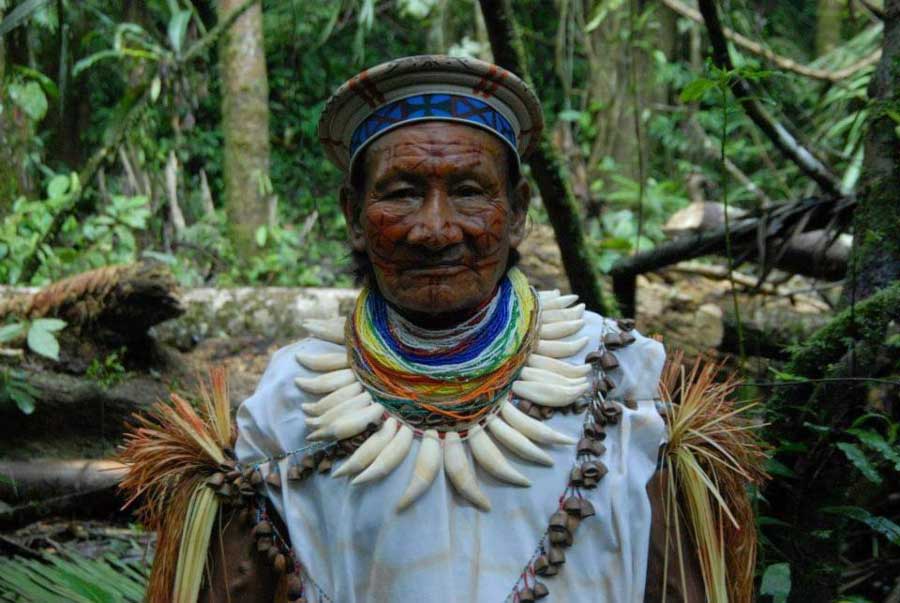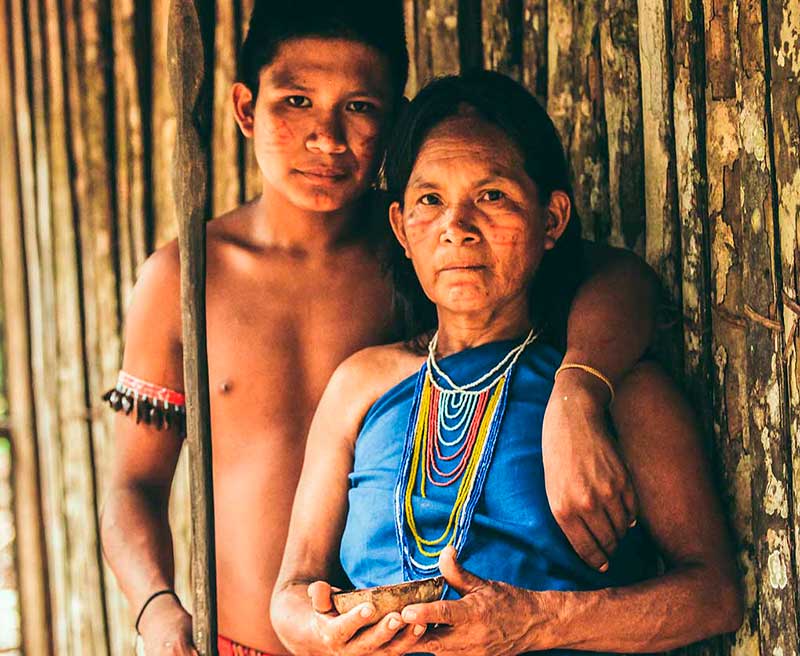PACIFIC COAST
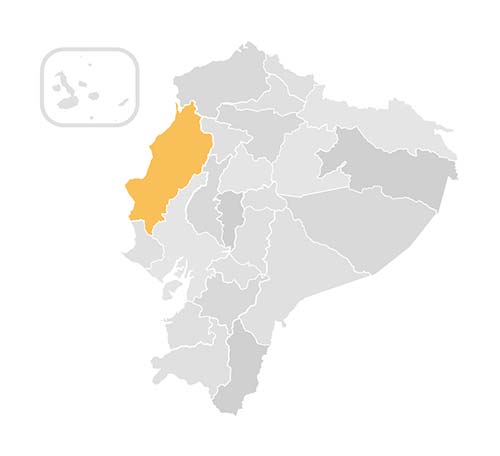
AGUA BLANCA COMMUNITY
It is located within the Machalilla National
Park in the canton of Puerto Lopez in the
province of Manabi. In the tropical dry
forest.
In this place, you can rest, and find
knowledge about the culture and history
of the Manteña culture, which belongs to
the period of Regional Development 500
BC in this you can find an archaeological
site of the same name, a site museum, and
a lagoon that has healing properties.
The tourist activities that can be done in
this community are: Visiting the site
museum, use of the Spa, enjoying the
gastronomy, and recreational activities in
the lagoon.
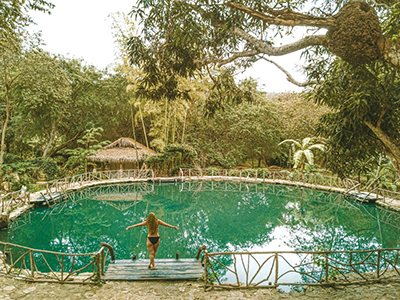
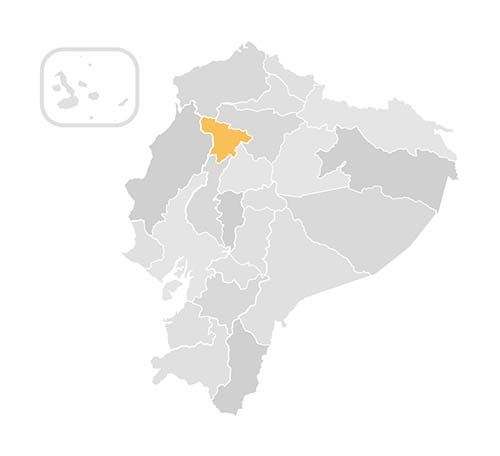
TSÁCHILAS COMMUNITY
It is located in the province of Santo Domingo de Los Tsáchilas and is made up of 7 communities: Poste, Petipa, Chiguilpe, Otongo Mapalí, Los Naranjos, Colorados del Búa, and Congóma. Tsachilas means “true people” the language they speak is Tsafiqui, and the clothing they use represents various elements of nature, such as the rainbow in the clothing of women, and in the case of men by the snake X, there is a legend about it. The traditions say that the earth is populated by spirits (oko) all these come from the world of nature, such as the spirits of the hills (du oko) or one of the most powerful the tiger (Kela oko).
The tourist activities that take place are Kasama or New Dawn Festival in March, energetic cleaning, lodging in the community, enjoying the gastronomy, hiking, and sport fishing.
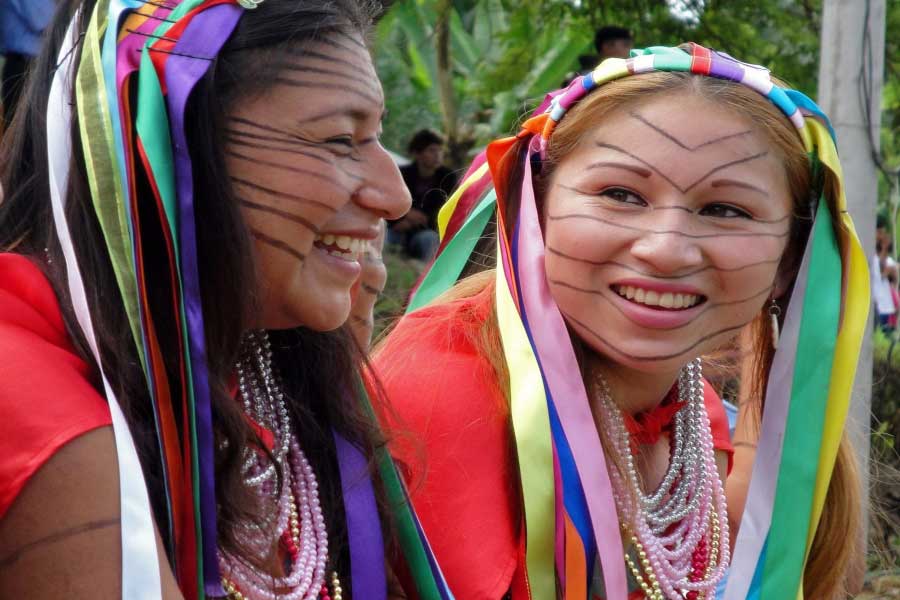

MONTUBIOS
They are located in the provinces of Guayaquil, Manabí, Los Ríos, and El Oro.
The customs that identify these people are the morphine, their clothing, their typical food, and their music.
The activities that can be shared with the inhabitants are the montubio rodeo, agrotourism, and the gastronomic route of Jipijapa.
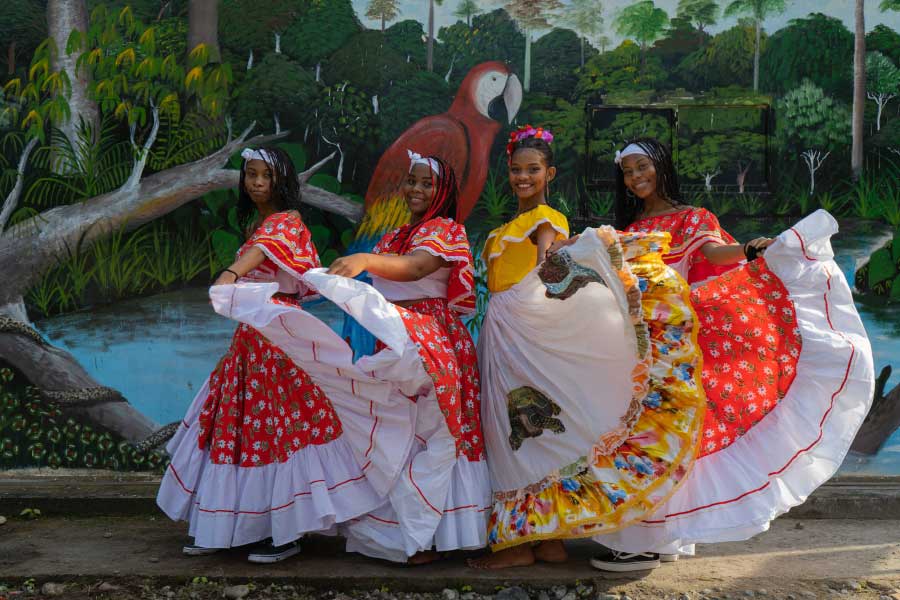
ANDES

SARAGUROS
The Saraguro people are located in the provinces of Loja and Zamora Chinchipe and have approximately 183 communities, it is said that they are descendants of the mitimaes sent by Huayna Capac when he undertook the conquest of Quito, they are proud of their lineage and take care of their lineage and speak the purest Kwicha.
The men’s clothing is characterized by ponchos and white hats with black spots and espadrilles. The women’s clothing consists of anacos and black shawls and blankets.
The activities that can be done in the community are: Visiting the Inca baths, visiting the wool hat-making workshop, enjoying its gastronomy, visiting the virgin waterfalls, stay in the community.
One of its traditional festivals is the Inti Raymi, Coya Raymi, Pawkar Raymi, and Capac Raymi, which are celebrations related to the Andean agricultural cycle.
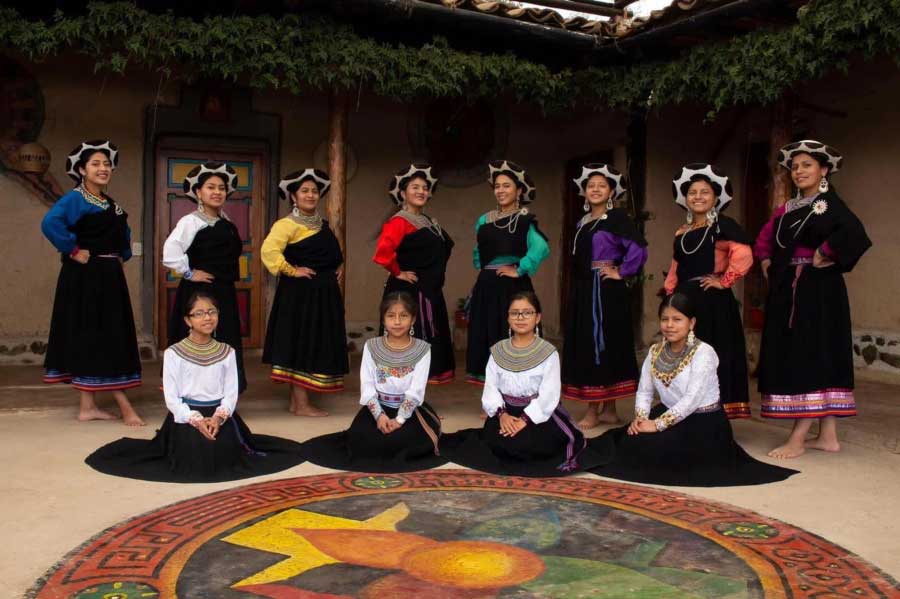
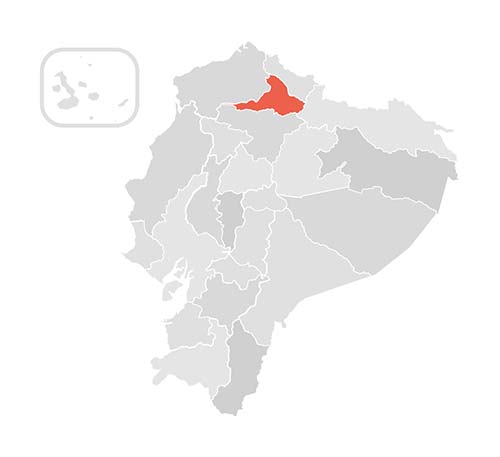
OTAVALO
The indigenous people of Otavalo come from the ancient Caranquis people.
They are located in the valley of dawn, which is the nickname of Otavalo, in the province of Imbabura.
Otavalo offers a coexistence with the communities of the area among the colorful textiles and handicrafts, by the millenary attractions and its tasty ancestral gastronomy.
The interculturality is observed in every corner and is manifested through folklore. Otavaleños wear their traditional garments, which they make themselves. Each of these unique garments is sold in the "Plaza de Los Ponchos", known as the largest indigenous market in Latin America.
You will be able to taste the exquisite cuisine of Imbabureña. They prepare an exquisite fritada that contains: pork, mote, toast, potatoes, maduro, and corn that will be a delight for your palate. The recipes with which this exquisite dish is prepared are an inheritance of years that is transmitted from generation to generation, something they also elaborate on is the fermented chicha with 7 varieties of corn, this drink is related to the main historical festival of Otavalo the Yamor, where the pre-Inca origin of the religious faith is linked, which is to thank for the crops and the fraternity of the people.
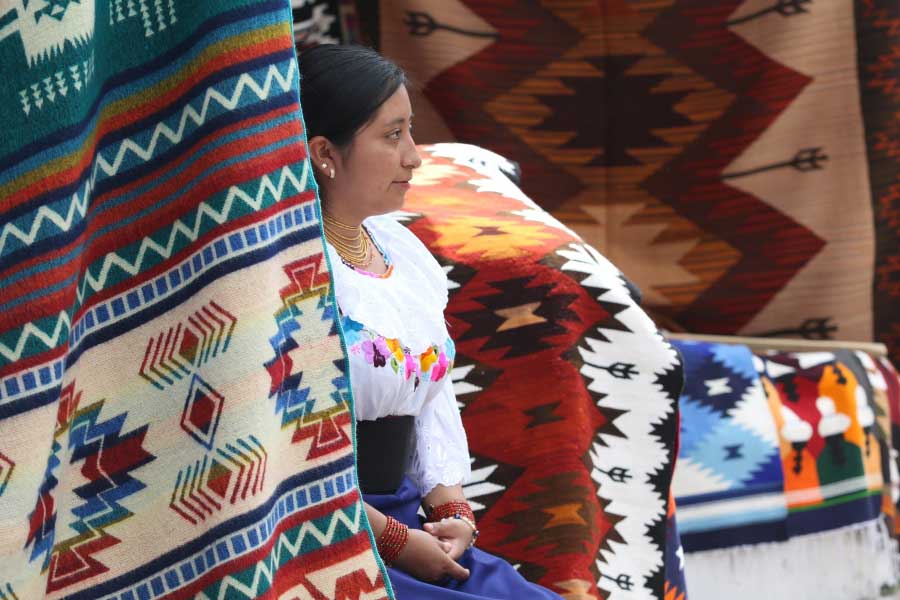
AMAZON

SHUAR
The Shuar community is found in several provinces of Ecuador, including Morona Santiago, Pastaza, and Zamora Chinchipe: Morona Santiago, Pastaza and Zamora Chinchipe, in protected areas such as Sangay National Park, Tiwi Nunka Natural Reserve, and Podocarpus National Park.
Shuar means “true people”, they had the custom of tsansa (head reduction). The type of housing they build, the walls are made of chonta wood, thatched roof, toquilla, and an earthen floor.
They usually perform a greeting in their native language, which includes a dance and a ceremony to ask permission from their god Arutam.
The tourist activities that can be developed are hiking, ecotourism, agrotourism, trekking, visits to sacred waterfalls, observation of local fauna, handicrafts, shamanism, climbing, and ayahuasca ritual. In this place, you can find attractions such as natural spas, primary forests, trails, and waterfalls.

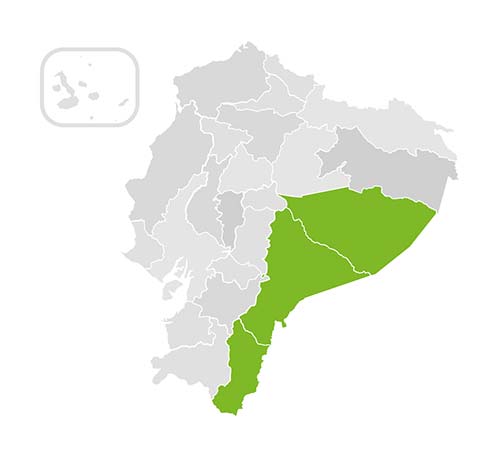
SIONA AND SECOYA
The Siona and Secoya ethnic groups belong to the Western Tukano linguistic family. They live on the banks of the Cuyabeno, along the Aguarico River. The name Secoya comes from a river and a stream that they consider their place of origin. In the Secoya language, the name Siekóy pai means people of the striped river. Thanks to their long hair, they are known as the “striped ones”. From the beginning, the Zionas and the Redwoods have been related, however, today they are said to be two separate ethnicities.
The men’s clothing is characterized by ponchos and white hats with black spots and espadrilles. The women’s clothing consists of anacos and black shawls and blankets.
The mens clothing is the chusma, a knee-length nightgown, and they also wear necklaces around their necks and bodies, their arms adorned with vegetable fibers. In the case of women, they use the traditional dress consisting of the dwarf, a long skirt to the knee, complemented with necklaces, nose rings, earrings, and seed crowns.
In the daily life of the Secoya community, their traditional festivities are to have a community meeting with plenty of food, bush meat and fish, yucca chichas, chicha de chonta, and guarapo.
Their house is elliptical, inhabited by a large family, made of mahogany or cedar with a palm roof and wooden pillars to counteract the danger of rodents.
Yucca is their main source of food, as well as fishing and hunting.
Tourist activities: hiking, gastronomy, energy cleansing, lodging in the community.
